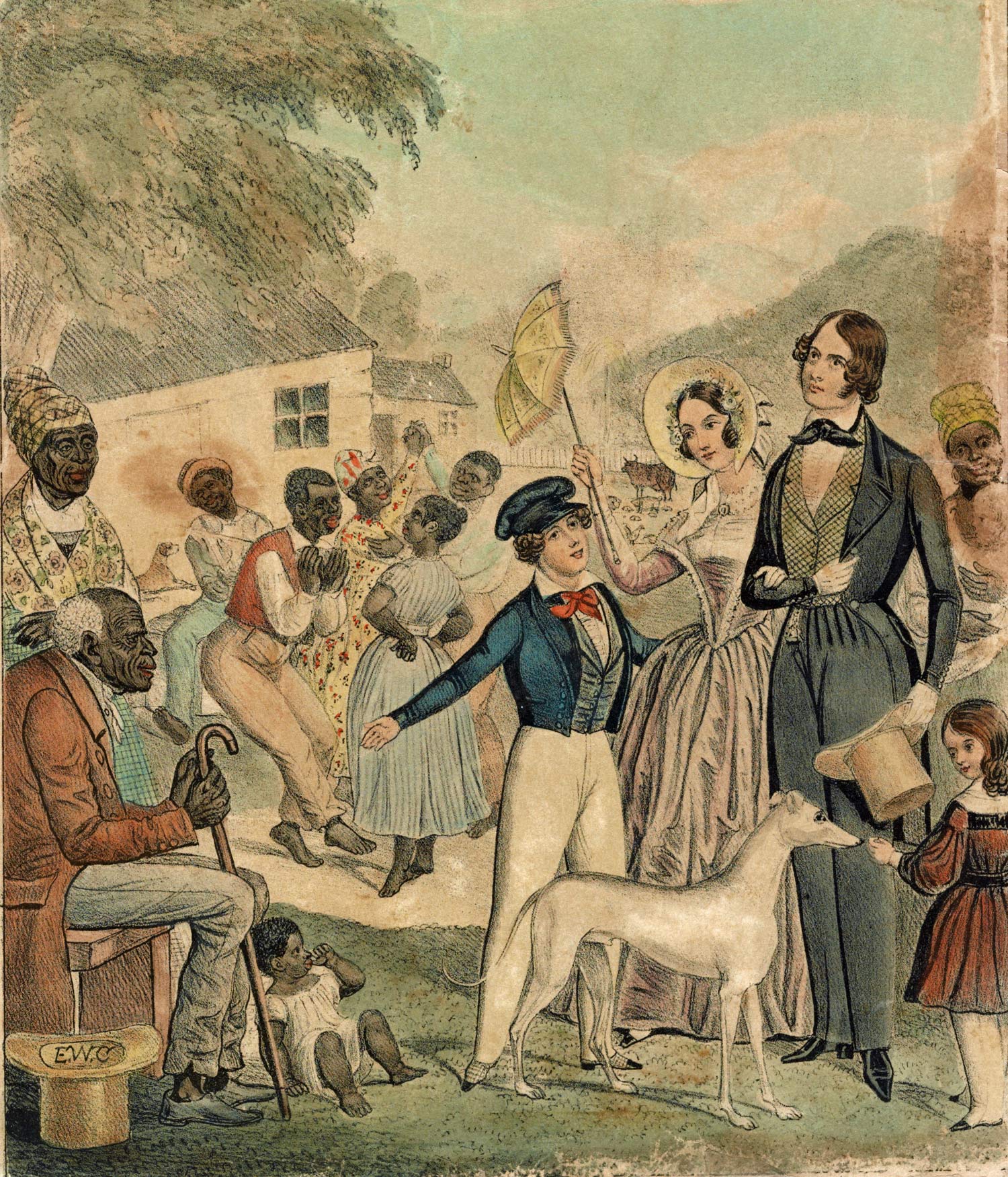
There’s a name for it now in American film and literature, the Black equivalent of the Manic Pixie Dream Girl: It’s the Magical Negro, the Black character who exists exclusively to make whites feel good about themselves. You see the character in so many movies or books about Blacks made by whites, for whites, to celebrate the virtues and greatness of whiteness, as with “Mississippi Burning,” “Green Book,” “The Legend of Bagger Vance” and of course Jim in Huckleberry Finn.
 We now have the Magical Negro elevated to an entire curriculum. It’s Florida’s African American History standards. The state Board of Education approved them this week, along with standards for 10 other disciplines. Suddenly combusting ulcers kept me from getting past the African-American ones. You can hardly do better as Exhibit A in a graduate course on critical race theory, vindicating the late Derrick Bell enough to have a chair endowed for him at New College. We’re a sick puppy of a society, or at least a state: let’s not blame America for Florida Man, here in full.
We now have the Magical Negro elevated to an entire curriculum. It’s Florida’s African American History standards. The state Board of Education approved them this week, along with standards for 10 other disciplines. Suddenly combusting ulcers kept me from getting past the African-American ones. You can hardly do better as Exhibit A in a graduate course on critical race theory, vindicating the late Derrick Bell enough to have a chair endowed for him at New College. We’re a sick puppy of a society, or at least a state: let’s not blame America for Florida Man, here in full.
The standards are an excellent illustration of what American history looks like through white eyes, and how whites are the best thing that ever happened to Black people, who apparently should worship the Middle Passage down the chains of their ancestry.
As history of course, the standards are a cracker festival of fantasy and chest-thumping. The history is often inaccurate, when it’s not obscene. But this is what we’ve come to in Florida’s Second Coming of Jim Crow, where Black Codes have been colorized into voting restrictions as elegies to integrity, where the poll tax has returned to hound ex-cons despite a constitutional amendment that supposedly restored their civil rights, where book bans and the overt prohibition on frank discussions of racism in schools and universities pose as academic something in Free Florida. Now we have racism codified in history standards.
The headlines have rightly focused on one obscenity in particular: the suggestion that if it weren’t for slavery, Blacks wouldn’t have learned all those terrific skills like “painting, carpentry, tailoring, domestic service.” I’m not making this up. In what the standards call a “benchmark clarification,” they specify that “Instruction includes how slaves developed skills which, in some instances, could be applied for their personal benefit.” I’m sure enslaved persons could slip in a little bit of personal time between the slave auctions, the 16 hours in the fields, the whippings, the rapes, the extra-judicial murders.
Necessary but rare nods to atrocities aside, these standards are framed in their totality as one big success story that highlights all the great things whites did for Blacks. They never mention white supremacy or its damning association with Christianity, in effect excusing it by omission. Instead, the standards resort to a form of cynical relativism that makes American slavery nothing more ordinary than the slave systems that existed in Africa or in Muslim slave markets. This is the stuff of Internet revisionism by white nationalists elevated to academic standards.
Some examples drawn directly from the standards:
Read Related Also: Todd Chrisley's 'Celebrity Status' Appears To Be Having An Adverse Impact On His Prison Experience
- “Examine the Underground Railroad and how former slaves partnered with other free people and groups in assisting those escaping from slavery.” Translation: look what whites people did for you.
- “Identify Afro-Eurasian trade routes and methods prior to the development of the Atlantic slave trade.” Translation: Don’t blame whites, everyone else did it.
- “Instruction includes how slavery among indigenous peoples of the Americas was utilized prior to and after European colonization.” Translation: See above.
- “Describe the contact of European explorers with systematic slave trading in Africa.” Translation: Blame it on Africans.
- “Instruction includes the similarities and differences between serfdom and slavery.” Translation: Aren’t you lucky you were in the Hammock instead of Siberia?
- Instruction includes the practice of the Barbary Pirates in kidnapping Europeans and selling them into slavery in Muslim countries. Translation: Fucking Arabs.
- “Examine the experiences and contributions of African Americans in early Florida.” Translation: Live, shop, play!
- “Instruction includes the Society of Friends (Quakers) and their efforts to end slavery throughout the United States.” Translation: Don’t blame Christians.
- “Instruction includes what made indentured servitude contracts a risky investment for colonists, based on economic and social factors.” Translation: Slavery was risk-free.
- “Instruction includes the transition from an indentured to a slave-based economy.” Translation: Capitalism at its finest.
The standards require instruction on writings by “Africans living in the United States,” as if Frederick Douglass and Sojourner Truth were aliens as opposed to Americans denied their rights. It refers to race massacres such as Ocoee and Rosewood in Florida as violence “perpetrated against and by African Americans,” again creating the false equivalence that echoes to this day in blaming the Black Lives Matter movement. It’s a wonder the standards don’t portray Sally Hemings as a seductress doing her part for the birthing of Thomas Jefferson’s social conscience.
In these standards, slavery is taught exclusively as a neutral, economic system made necessary by the “desire for knowledge of land cultivation”–again, I’m not making this up– “and the rise in the production of tobacco and rice,” as opposed to how, say, “New Orleans became the Walmart of people selling” (in Nikole Hannah-Jones’s words), so a white aristocracy could croon about freedom and honor, and croon still about Southern gallantry.
But hey, the standards will “Examine economic developments of and for African Americans post-WWI, including the spending power and the development of black businesses and innovations” and “includes the impact of Freedman’s Savings and Trust Company,” because who really needs to read about the more than four thousand Black men, women and children murdered by lynching from the end of Reconstruction to 1950? We’ll learn about “the ramifications of President Franklin D. Roosevelt’s New Deal (1933-1945) on African Americans,” but not his refusal to sign an anti-lynching law. We’ll learn about “the effects of the election of African Americans to national office” but let’s not trouble with the kicking of Adam Clayton Powell out of Congress or the robbing of Muhammad Ali of his title.
There’s a sprinkling of the grimness of our racist past in the standards to be sure, but it has the feel of tokenism, a sort of reverse use of the Magical Negro to check off a few boxes and come out looking like the standards valiantly address the nation’s tragic failure. But that’s just it: the standards don’t see tragedy. They don’t see failure. They see a linear narrative that goes from few peculiar mistakes here and there to great triumph. No need to dwell on the grim. No need, really, to dwell on the past. These history standards have very little to do with history and very much to do with a recasting of myths as reality.
An entire system based on terrorism and repression is magically transformed into a sensitive evolution of a white supremacist culture that did so much to allow Blacks to find themselves and their tormentors to pat themselves on the back. Naturally, racism is over. Naturally, Free Florida is God’s gift to Blacks. This is history in the land of DeSantistan. Praise be, massa.
![]()
Pierre Tristam is FlaglerLive’s editor. A version of this piece aired on WNZF.










